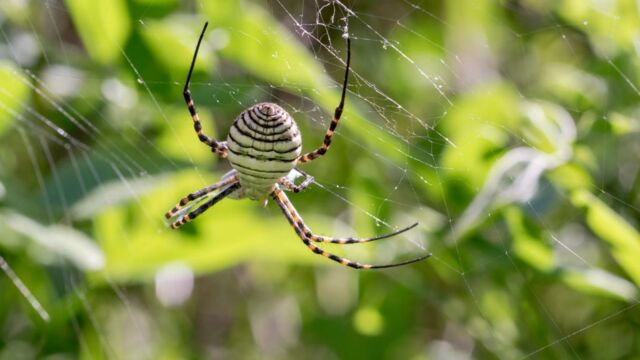A real life version of the spider from harry potter has been discovered

Iranian researchers have chosen to name a new species of spider ‘Lycosa aragogi,’ in tribute to the famous giant spider under the protection of Rubeus Hagrid.
Harry Potter fans and arachnophiles be warned! A new species of spider belonging to the Lycosidae family, also called wolf spiders, has just been discovered and now bears quite an original name, Lycosa aragogi. Does this remind you of something?
Discover our latest podcast
That’s right, the creature was baptized in homage to ‘Aragog,’ the famous giant spider, or more precisely ‘acromentule’, found in the fantastic Harry Potter saga. ‘The opportunity to give it this name was too big to miss,’ joked the researchers at the origin of the discovery, published in the Zootaxa scientific journal.
More under this adMore under this adThe designers of the creature who appears in the second instalment of the Harry Potter movie series, Harry Potter and the Chamber of Secrets, were inspired by the anatomy of a real wolf spider to create ‘Aragog,’ commented Alireza Zamani, co -author of the study and former student specialising in Animal Biosystematics at the University of Tehran in Iran.
‘We discovered that there is an extreme similarity between our spider and Aragog as he is shown in the second film,’ she said. ‘Since this was also the 20th anniversary of the entire Harry Potter series, we thought it was a good idea and a good way to celebrate this wonderful franchise.’
More under this adMore under this ad1 inch ‘wandering spiders’
This new spider was found on April 26th in a mountainous area in southeastern Kerman, Iran. Although Aragog and his giant body give Harry Potter and his friend Ron Weasley quite a scare, Lycosa aragogi is obviously less imposing. It measures about 1 inch long, without its legs, according to the description.
The body of the animal is dotted with many black and white stripes and its appendages are covered with setae, i.e. microscopic black hairs that give it ‘a charismatic look,’ noted Zamani, reported by LiveScience. Like other wolf spiders, Lycosa aragogi is what is called a ‘wandering spider.’
More under this adMore under this adIt does not weave webs but remains rather withdrawn in its burrow during the day, going out only at night in order to hunt for prey. According to specialists, these species of spiders have a relatively short life expectancy of about 3 years, but unlike their cousins, they have excellent sight.
Spiders with a pronounced maternal instinct
These spiders have a thin layer of tissue behind the retinas of four of their eight eyes. Known as Tapetum lucidum, this reflective layer captures sunlight during the day and allows for better vision in dim lighting. It also makes their eyes shine in the dark like those of cats, which ‘helps arachnologists collect them at night,’ said Alireza Zamani.
More under this adMore under this adIn addition, large wolf spiders display a relatively pronounced maternal instinct; they carry their egg sacs on their bodies and even temporarily expose them to light and heat to best contribute to the development of their offspring. Once the little spiders are born, their mother keeps them on her back and carries them everywhere with her. Zamadi explains that:
This behaviour is reminiscent of that of Aragog who loves his colony of acromentules [a fictional species of spider] so much that the male does not prevent them from trying to devour Harry Potter and Ron Weasley.More under this ad